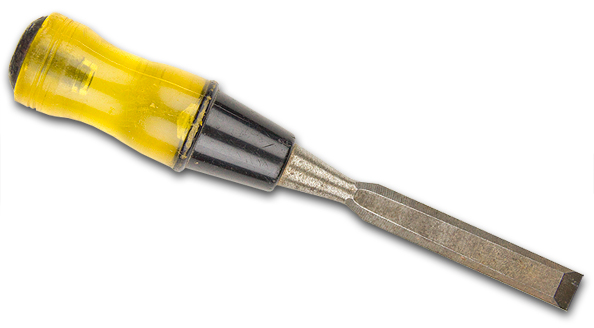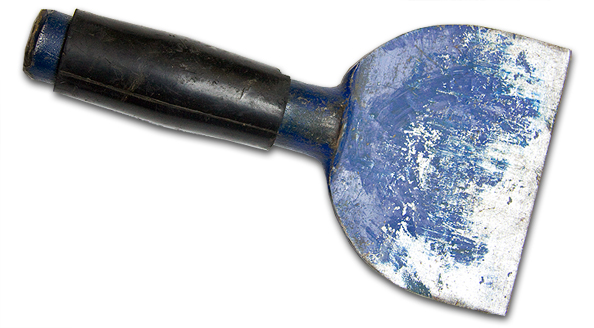Hand tools
Chisels
When working as an electrician occasionally the best method to cut, chip or remove material is with the aid of a chisel. The most common chisels used are:
- wood chisel
- cold chisel.
Wood chisels
Wood chisels come in a variety of types.
They have a plastic handle and a parallel sided steel blade which tapers at the end to a very sharp edge. The width of the blade can be from 6mm to 50mm.
Application:
- cutting recesses for architrave dimmer switches
- cutting recesses in skirting for socket outlets, etc
- cutting rebates in studs or noggins to accommodate cables.

Wood chisel
Safety precautions
- Discard if the handle is cracked or split.
- Never use a wood chisel as a lever.
- Make sure the work is braced or supported.
- Never place your hand where it could be cut if the chisel slipped.
- Never chip towards yourself or others.
Cold chisels
Used for cutting into or chipping 'cold' metal (not to be used on 'hot' metal). Cold chisels are manufactured from either carbon tool steel or alloy (combination) steel. They are available in different:
- lengths (100mm to 350mm)
- width of the cutting edge
- cutting types (flat, side cutting, half-round, cross-cut and diamond point).
Flat cold chisel

Cold chisel
The most common cold chisel used by electricians is a 200mm x 25mm flat chisel.
Application:
- cutting out rivets or seized nuts
- cutting sheet metal
- chasing (grooving) masonry
- chipping off parts of a brick.
Other types of chisels
Seaming chisels
These chisels are also known as coursing or plugging chisels. Their main application is in the removal of mortar from around a brick, so that the brick can be removed.
Bolster chisels
Having a blade 65mm wide, an `electricians’ bolster chisel is used mainly to chip or cut bricks to allow cables or conduit, etc, to enter a building.

Bolster chisel
Safety precautions when using chisels
- Wear safety glasses.
- Never chip towards yourself and protect others with screens.
- Do not use a chisel that has a crack or a flaw.
- Check that the hammer is in good condition.
- Make sure your hands, the chisel and hammer are clean and dry and free from grease.
- Watch the cutting edge of the chisel, not the head.
- Make sure that the size of the chisel and its cutting angle are correct for the job.
- Never use a chisel with a mushroomed head.
Note: Special safety chisels made of beryllium-copper should be used in locations where impact sparks could cause an explosion.
Sharpening chisels
Alloy steel chisels should be sharpened with a file. Heat from a grinding wheel will affect the hardness.
Carbon tool steel chisels should be sharpened on a grinding wheel. Take care not to overheat the tip or the metal will become 'soft'.



